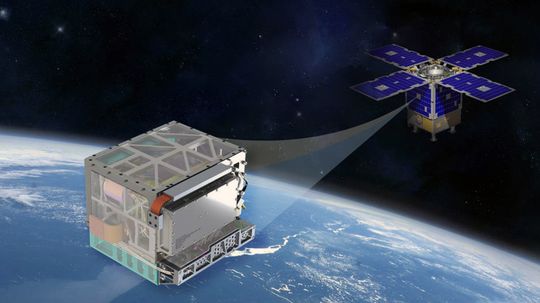As NASA continues to push the boundaries of space exploration, their latest endeavor involves a remarkable piece of technology – an atomic clock. This groundbreaking mission aims to revolutionize our understanding of time and navigation in deep space.
A Quantum Leap in Precision Timekeeping
The atomic clock that NASA is sending into deep space represents a quantum leap in precision timekeeping. Unlike traditional clocks that rely on mechanical or electronic oscillators, this state-of-the-art device harnesses the natural vibrations of atoms to measure time with unparalleled accuracy.
By utilizing the properties of cesium atoms, which vibrate at a frequency precisely defined by nature itself, this atomic clock can maintain its accuracy within one second over millions of years. Such extraordinary precision will enable future spacecraft to navigate through vast cosmic distances with unprecedented reliability.
This revolutionary technology holds immense potential for advancing our understanding not only of space but also fundamental physics. By studying how gravity and other forces affect these ultra-precise atomic vibrations, scientists hope to gain new insights into the very fabric of our universe.
Pioneering Deep Space Navigation
One key objective behind NASA’s decision to send an atomic clock into deep space is its potential impact on navigation systems used by spacecraft venturing far beyond Earth’s orbit. Traditional navigation methods heavily rely on signals from Earth-based antennas or satellites orbiting close to our planet.
However, as missions extend further out into the cosmos, these signals become weaker and less reliable due to distance and interference from celestial objects. The deployment of an atomic clock onboard a spacecraft would provide autonomous timing capabilities that are immune to such limitations.
This newfound autonomy could pave the way for more efficient interplanetary travel as well as future manned missions to distant celestial bodies. By reducing reliance on Earth-based infrastructure, astronauts and robotic explorers would gain greater flexibility and resilience in their journeys through the cosmos.
Unraveling the Mysteries of Time
Beyond its practical applications, NASA’s atomic clock mission also holds profound implications for our understanding of time itself. The nature of time has long captivated philosophers, scientists, and thinkers across cultures throughout history.
By venturing into deep space with an atomic clock that can measure time with unparalleled precision, we embark on a journey not only to explore the vastness of our universe but also to unravel the mysteries that lie within the very fabric of existence.
This mission represents a bold step towards unlocking new frontiers in both scientific knowledge and human exploration. As this atomic clock propels us deeper into space, it simultaneously propels us closer to comprehending one of humanity’s most enigmatic concepts – time.
A New Era Beckons
In conclusion, NASA’s decision to send an atomic clock into deep space marks a significant milestone in our quest for knowledge beyond Earth’s boundaries. This groundbreaking technology promises advancements in navigation systems while offering insights into fundamental physics and challenging our perception of time itself.
As we eagerly await the results from this audacious mission, one thing is certain – we stand at the precipice of a new era where humanity ventures further than ever before armed with an unyielding curiosity about what lies beyond.



